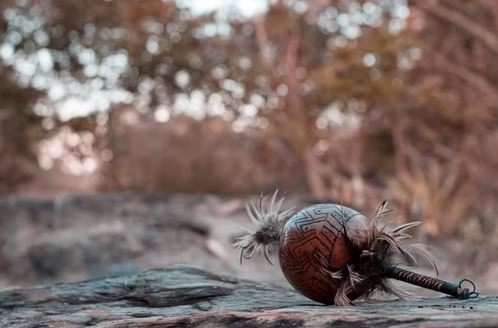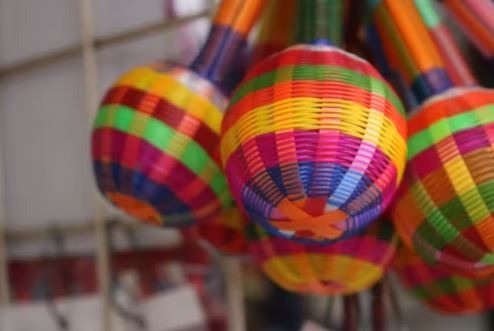Native Americans, Spaniards, and Africans all contribute to the cultural diversity of Latin America. We acquired the guitars from Spain, the drums from Africa, and one of the instruments, the maraca, from Native Americans.
The majority of studies concur that the Latin American native tribes are where the maraca originated. On which tribe and which country in Latin America they were initially observed, however, they disagree. Venezuela, Brazil, and Puerto Rico appear to be the top 3 nations that disagree with each other over where the maracas originated.
The South American Arauca tribe appears to have the strongest connection to the maraca’s invention. Either they engaged in combat directly when stationed in what is now Brazil, or they engaged in combat indirectly by traversing South America. They eventually forced the Taino tribe to relocate to the Caribbean’s Lesser Antilles islands. The Tainos moved onward toward Puerto Rico. As it turns out, a different theory suggests that this was the location where they invented the maracas.
Maraca Background
The maracas, a pair of gourd-made rattles, are among the percussion instruments with the most distinctive sound. Maracas are necessary for Latin and South American orchestras, bands, and other types of music that use the maracas’ rhythm.
Maracas are either oval or egg-shaped and are utilized as musical instruments. Depending on how sound is created, the family of musical instruments is classified into several groups. Maracas are a further subset of instruments that are shaken rather than struck and are categorized as “idiophones,” which are solid or sealed objects that produce full, distinct sounds. The xylophone, castanets, and cymbals are examples of idiophones that are hit.
The most common method for making maracas is to use dried gourds that have been filled with beads, beans, or tiny stones. Each gourd has a handle that can be used for shaking as well as sealing the noisemakers within. In place of employing just natural materials like gourds or other plant pods, wood, and leather, the manufacturing process now also uses plastic and fiber. Additionally, it has more advanced equipment for creating wood handles.
History of Maracas
Drums and other percussion instruments have been around since the Stone Age. Maracas might have been invented roughly in the same period by various ancient civilizations. Drums, a variety of rattles, and other similar instruments are known to have been performed by African tribes as part of their long-standing traditions. Using plants that produced seed pods resembling gourds, islanders in the South Pacific developed a broad variety of rattles as well. Rattles without handles were even made from dried coconuts. Maracas were utilized by witch doctors as symbols of supernatural beings in South America, where they were shaken to summon the spirits. The gourds served as representations of the spirits’ heads.
Players of the maracas in the nations and regions of South America prefer a variety of gourds as well as particular playing traditions. In Colombia, the “conventional” maracas are used, but in the Andes Mountains, smaller maracas known as gapachos are used instead because they are packed with seeds from the gapacho plant. Instrumentalists perform gapacho-like clavellinas in Colombia’s Llanos region. Maracas are made in Paraguay from porrongo gourds, but only men are allowed to play them. Only the singers in Venezuelan ensembles play the maracas, which are used to create simple rhythms.
Maracas are a common instrument in contemporary rhythm and percussion bands that play music in various genres. Even classical music has included parts for them; for instance, the ferocious sections of Prokofiev’s Romeo and Juliet, which was created in 1935, call for the use of maracas. Even in classical music, maracas are slammed against the heads of drums to create fascinating effects. In 1942, Leonard Bernstein composed the Jeremiah Symphony, which included music for drumsticks made of maracas.
Who Uses the Maracas?
The maraca was first utilized in religious chants and rituals by the native people of Latin America. They produced lively music that brought attention to these ceremonies.
The maraca was added to numerous rhythms that were emerging in Latin America and the Caribbean in the 19th and 20th centuries. They were included in the “son,” “guaracha,” and “danzon” in Cuba. Various words are used in pairs for these genres.
A solitary maraca is used for Puerto Rican “bomba,” and it is often larger than the maracas used in pairs.
The Design of Maracas
Even though the family of rattles contains many different variations, the design of maracas has taken on a classic form. Maracas have a hollow outer shell with an oval top or bell within that rattles against the shell when the instrument is shaken. The handle of the maracas can be used to shake them.
The materials used to produce the bell, beans, and handle can differ in type, shape, and size within the confines of this basic description. Gourds or leather that has been stitched together traditionally serve as maracas. However, hard fibers and plastics for the bell as well as plastic noisemakers have been manufactured by current technology. Handles can be precisely shaped using tools like lathes to fit the bell.
When the bell is constructed of leather, the leather sections are stitched by machines. Modern glues are another technological advancement that guarantees the binding, handles, and bells will fit snugly for a very long time. The gourds are meticulously dried in climate-controlled facilities by the manufacturers. They will shrink and shrivel if they are dried too rapidly.
The bells’ exterior designs, which are constructed of various materials, likewise vary. The outsides of most gourds are painted in vibrant hues from their native lands or hues appropriate for the instrumentation or musical genre. The colors red, yellow, and green are cheerful and well-liked, but graphics in dark brown on the yellow depict instruments, indigenous people, beaches, forests, or other sceneries. Gourds with feathers strung from the binding around the handle are used by Hawaiian dancers to play, and the feathers move in time with the dancers.
Maracas in Modern Times
Due to their rhythmic sound, maracas have a lengthy history and a bright future. They have positive associations because they are frequently children’s first instruments. In many regions of the world, musicologists who preserve the history of musical genres that may not have been recorded are recording and preserving ethnic music that uses maracas so that this musical heritage will not be lost.
These percussion instruments are at home in a variety of musical genres in contemporary music. Maracas have received a lot of attention recently due to Latin music’s rising popularity, and ethnic music requires the maracas’ distinctive sound. This fascination spread through recordings, giving the maracas an ever-growing fan base.


